Taxidermy4Cash.com
Edwardian Taxidermy
We are always very interested in Purchasing Victorian Taxidermy, please respond via this on-line form of what you have for sale. HERE
We get asked to recommend Victorian / Edwardian Taxidermy dealers and Victorian / Edwardian
Taxidermy Resources by our friends to our customers, we now include below examples of Victorian taxidermy and useful information and contacts in this arena. Please feel free to browse. If you have any specific informtion pertaining to cases and or Victorian taxidermist, please let us know and we shall put it in this section of the website.
The aim of this website apart from buying good quality examples of this taxidermy artform is also to create a centre of information so that individuals can expand their own personal knowledge and also contribute to shared knowledge of this subject matter.
The Victorian and the Edwardian periods were perhaps the heyday of this taxidermy art form. Clearly most items should now be regarded as antique and irreplaceable, certainly by the original artists. Below are example of early Edwardian taxidermy. Please feel free to browse.
We are always interested in Purchasing Victorian Taxidermy, please respond via this on-line form of what you have for sale. HERE
THE MAN-EATERS OF TSAVO and Other East African Adventures by Lieut.-Col. J. H. Patterson, D.S.O. 1907
Back in 1898, the British decided to build a railroad in East Africa. This railroad would stretch from Mombasa on the coast of modern-day Kenya to Lake Victoria, and later into Uganda. This railroad, called the Uganda Railroad was also referred to as 'The Lunatic Line'. It was said by it's opponents to go 'from nowhere to utterly nowhere'.
March 1898 the British started building a railway bridge over the Tsavo (SAH-vo) River in East Africa. Over the next nine months, two large male lions killed and ate nearly 140 railway workers. Crews tried to scare off the lions and built campfires and thorn fences for protection, but to no avail. Hundreds of workers fled Tsavo, halting construction on the bridge.
Before work could resume, chief engineer Lt. Col. John Henry Patterson (1865-1947) had to eliminate the lions and their threat. After many near misses, he finally shot the first lion on December 9, 1898, and three weeks later brought down the second. The first lion killed measured nine feet, eight inches (3 m) from nose to tip of tail. It took eight men to carry the carcass back to camp. The construction crew returned and completed the bridge in February 1899.
Nevertheless, this railroad had some legitimate purposes to exist. In those days, the only route into the interior of the African continent was on foot. There was much in the way of agricultural goods and other wares that could not easily reach market due to the lack of transportation. Missionaries had considerable trouble reaching the rich 'fields' in central Africa. Finally, there was was the nagging slave trade problem. It was hoped that good transportation would encourage people living in the interior of the continent that there were better ways of making a living than capturing slaves.
After completing the railroad, Patterson became chief game warden in Kenya and later served with the British Army in World War I. He published four books and lectured widely on his adventures. After speaking at The Field Museum in 1924, Patterson sold the museum the lion skins and skulls for the then-sizeable sum of $5,000.
The skins arrived in less-than-perfect condition--old and dry, they had been cut down into rugs. (In real life the lions were even larger than they appear as taxidermy mounts.) The skins were also blemished by gunshot wounds and thorn scratches. Museum taxidermist Julius Friesser did an extraordinary job creating the life-like mounts you can see at The Field Museum.
![TsavoManeatersMuseum[1].JPG](TsavoManeatersMuseum[1].JPG)
Images from the above book. Maneater, the Tsavo Lions without manes preserved by Julius Friesser at The Field Museum in 1924
The construction of this railroad remains one of the great engineering feats of the late 1800's. It's 580 miles of track had to cross the great rift valley, several rivers, and some of the most inhospitable territory you could imagine. Construction started in 1896, and reached what is today Nairobi in 1899. It finally reached Kismu on Lake Victoria in 1901. It took 27 more years for the railroad to actually be extended to Kampala, Uganda.
![skinnedtsavolionsandskulls[1].JPG](skinnedtsavolionsandskulls[1].JPG)
Images from the above book. Maneater, the Tsavo Lions, skinned and skulls preserved.
It was not many days after Colonel Patterson arrived that reports started coming in about workers disappearing. Although it was told him that lions were responsible, Patterson at first didn't believe it. When he finally investigated, it was quickly (and gruesomely!) discovered that not one but two lions were responsible for killing the workers. Early attempts to shoot the lions were unsuccessful. The lions seemed to be able to predict what Patterson would do next. And, with camps scattered up and down the railway for 30 miles, the lions could strike in a different camp each night
![tsavolionstaxidermy[1].JPG](tsavolionstaxidermy[1].JPG)
Images from the above book. Maneater, the Tsavo Lions.
It was not many days after Colonel Patterson arrived that reports started coming in about workers disappearing. Although it was told him that lions were responsible, Patterson at first didn't believe it. When he finally investigated, it was quickly (and gruesomely!) discovered that not one but two lions were responsible for killing the workers. Early attempts to shoot the lions were unsuccessful. The lions seemed to be able to predict what Patterson would do next. And, with camps scattered up and down the railway for 30 miles, the lions could strike in a different camp each night
![stuffedtsavolion[1].JPG](stuffedtsavolion[1].JPG)
Images from the above book. Maneater, the Tsavo Lions.
It was not many days after Colonel Patterson arrived that reports started coming in about workers disappearing. Although it was told him that lions were responsible, Patterson at first didn't believe it. When he finally investigated, it was quickly (and gruesomely!) discovered that not one but two lions were responsible for killing the workers. Early attempts to shoot the lions were unsuccessful. The lions seemed to be able to predict what Patterson would do next. And, with camps scattered up and down the railway for 30 miles, the lions could strike in a different camp each night
The workers soon constructed thorn bomas (A boma is a thorn fence erected around a dwelling or corral designed to keep predators such as lions out.) around their camps, and kept fires burning at night to try to scare off the lions. But it didn't work. The lions literally ignored the thorns, and would drag themselves and their meals right through them. This caused no small concern among the workers.
Still, there were a couple of lucky escapes. One night, a lion attacked a man riding a donkey. The donkey was knocked over and the man knocked off. The lion moved in for the kill, and somehow got his claws hooked on a rope tied to some oil cans that had been around the donkey's neck. The lion couldn't immediately figure out how to unhook the rope, and the oil cans were making a terrible racket. The noise frightened the lion so much that it ran off back into the bush, dragging the oil cans with it. The rider escaped to the safety of a tree and stayed there the rest of the night.
Another time, one of the lions broke into a tent, and was intent on carrying off the occupant who was sleeping on a mattress. Instead, somehow, the lion got hold of the mattress and pulled it out from under the man. Soon realizing it's mistake, the lion dropped the mattress and ran off. Another time, one of the lions jumped onto a tent containing 14 Indian 'Coolies'. The lion broke through the tent, clawing up one man's shoulder in the process. Somehow in the ensuing confusion, the lion grabbed a sack of rice and made off with that instead. The lion 'threw it down in disgust' a short distance away and beat a hasty retreat.
At first, the effect of the lions grisly habits on the workers wasn't too great, because the camps were spread out over a large area. But, a large area. But, as the railhead pushed Northwestward, only a few hundred workers were left at Tsavo to build the bridge. The lions now directed their efforts on this one camp, and this is when the morale at Tsavo really began to drop!
One night, one of the lions attacked the hospital tent. At first, he was scared away when the doctor's assistant knocked over a cabinet of supplies in fright. But, the lion tried again. Breaking through the tent, he seized one of the patients, and injured 2 of the other patients. It was decided after that to move the hospital tent. The very next night, a lion attacked the new hospital tent! Many of it's occupants got to witness the lion seize, kill and drag through the thorn boma the hospital's water-carrier. The next day, (as was usually the case for these lions) all that was left of the water-carrier was his head, a few of the larger bones, and part of his hand.
The hospital-tent was moved again, and an even thicker boma was erected around it. A supply wagon was parked at the previous hospital tent location, and some cattle were tied up inside the boma as bait. Colonel Patterson and the Doctor stayed up all night, hoping to get a shot at the lions. Their vigilance was rewarded, as one lions jumped into the boma. Patterson and the doctor figured that the lion had silently dispatched one of the cattle and was trying to find a place to get out of the boma. Unbeknownst to them, the front entrance to the boma was not properly secured, and the lion exited by this route. It then proceeded to stalk Patterson and the Doctor. Luckily for them, they figured this out in time. The lion attacked, and Patterson got off a shot. This scared off the lion. Colonel Patterson writes much later in the Field Museum account of that incident that he believes that he shot one of the canine teeth out of the mouth of that lion. If this was indeed the case, this lion was the one now known as maneater #1. The date was April 23rd.
![hospital tent[1].JPG](hospital tent[1].JPG)
Images from the above book. Hospital tent, with injured helpers .
After the incident at the old hospital site, the lions left the area for a few months, and later accounts report people were disappearing at other camps some miles away. During this time, a considerable amount of effort was spent building an elaborate trap using a boxcar, to be ready should the lions return. The boxcar was divided into two compartments by strong bars. A trip wire was arranged to drop a gate made of railroad rails over the entrance to one of the compartments. (For lack of a suitable drill, Colonel Patterson 'drilled' holes in the rail sections with his .303 rifle!) There was a small, secure entrance into the other compartment. Thorns were piled all around the boxcar. For the first few nights, Colonel Patterson sat inside the secure compartment, acting as human bait. Should a lion sense his presence inside the boxcar, it would enter and trip on the trip wire. The gate would fall and trap the lion in the first compartment. The Colonel could dispatch the lion at his leisure from behind the strong bars. After a few days, he got some other people to take turns manning this trap.
The lions had been gone for so long that the workers started to let down their guard a little. This didn't last long. One night, some of the Coolies had decided to sleep outside their tent, but inside the boma. This would not be their lucky night. One of the lions jumped into the boma. Although stones and firebrands were hurled at the lion, it selected a victim, and dragged it out of the boma through the thorns! Outside the boma, the other lion joined the first one, and they enjoyed their meal not 30 yards away. Even though shots were fired at the lions, none of them made their mark, and the lions went right on eating.
Soon, a sort of routine would settle in. The lions would be heard roaring in the vicinity of one of the camps (They were again spread out up and down the rail line.). Suddenly, they would stop roaring. Word would go from camp to camp, 'Beware brothers, the devil is coming!'. There would be agonizing shrieks from somewhere in the camp, and one less person at roll call the next morning.Every night, Colonel Patterson and others would stay up, hoping to get a shot at one of the lions. They never did.
![swingingantelope[1].JPG](swingingantelope[1].JPG)
Images from the above book. Hunting trip.
The lions were getting bolder and bolder. Some nights, they would each take a victim, so they wouldn't have to share. They could go undetected right through the thorn fences. One night, a bunch of Coolies escaped the lions to the safety of a tree. They so heavily loaded the tree that it collapsed, throwing them to the ground very close to the lions. But, the lions didn't care. They had already caught a victim and were too busy feasting on him.
One night, the lions caught a victim and carried it close to Colonel Patterson's camp to devour. He vividly remembers the sound of bones being crunched and contented 'purring'. It took days to get these sounds out of his head. (Lions actually can't purr like smaller felines. They have a rough 'pseudo purr' they don't often use.)
Finally, on December 1st, the workers approached Colonel Patterson and told him they would no longer be 'food for lions or devils'. As soon as this ultimatum was delivered, the workers went out and threw themselves down on the tracks in front of the next train. They then climbed on every available seat, and left Tsavo. The entire railway project ground to a halt. Only a small number of workers were brave enough to stay behind. These workers took up residence in trees, atop water in trees, atop water tanks, or in underground pits covered with logs.
On December 3rd, the Superintendent of Police arrived with twenty men to help hunt down the lions. It was on that night that one of the lions finally entered the rail-car trap. There were three armed men in the secure part of the trap. After the gate had fallen, the lion began to thrash at the bars, scaring the men silly. Finally, they got their courage up and began firing. Even though they could have touched the body of the lion with the muzzles of their rifles, nobody succeeded in getting a shot into it. Instead, one of the shots broke the chain holding the gate shut. The lion escaped with very minor injuries. The superintendent of Police, his men, Patterson and others tried to track the lions. Although one person got a brief glimpse, they again escaped! They tried again for two more days to track the lions. No success. The Superintendent and his men could not afford to stay any longer. Patterson was again left alone with the lions.
Patterson then rounded up his remaining Coolies, and instructed them to bring along things to make noise with. They surrounded the thicket. Patterson then stood at an animal trail coming out of the thicket. On his signal, the Coolies advanced, making all sorts of racket. It was then that Colonel Patterson actually saw one of the maneaters for the first time- a huge maneless male. He lifted his weapon to fire. Click! The twin-barreled rifle misfired! Intimidated by the noise, the lion jumped past Patterson and started to run off. He finally remembered he had another shot in his rifle and fired. He managed to hit the lion in the back, but it got away.
![ninefeet8inches[1].JPG](ninefeet8inches[1].JPG)
Images from the above book. Lion fallen, 9 feet 8 inches in length.
Dismayed, Colonel Patterson went back and looked at the donkey. The lion had just began it's meal on the hindquarters. (Lions like to start eating on the hindquarters because there is a lot of meat there without a lot of bones.) A nice donkey like this would be too good of a meal to abandon. The lion might return to finish his meal.
Then, Patterson had an inspiration. Taking 4 poles, and a plank of wood, he constructed a platform in close to the donkey carcass. This platform, called a machan, would serve as an artifical 'tree' from which to hunt the lion. (There were no nearby trees to sit in.) He lashed the donkey carcass to a nearby tree stump with wire, so it couldn't be dragged off. Normally, Patterson would stand vigil with his gun-bearer (Colonel Patterson was an experienced big game hunter.), but tonight, he was sick. So, he began that night's vigil alone.
It wasn't long before Patterson heard a twig snap and a sigh of hunger. The lion had indeed returned! But, as he watched, he determined the lion had detected him. Now, the lion was stalking Colonel Patterson! For two hours, the lion circled the rickety platform. All the lion would have to do is knock out a pole, or jump at the platform to dislodge Patterson. Instant easy meal! The whole situation made Patterson's flesh crawl.
Suddenly, something hit Patterson on the head! It turned out to be an owl that had confused him for a tree branch. He quickly recovered his wits. Below, the lion growled, and moved in for the kill! Very carefully, Patterson raised his rifle and fired. There was an angry growl, and the lion jumped around all over. He jumped into the bushes. Patterson fired away into bushes. The growls continued, but were growing weaker. They finally ceased altogether. One of the maneaters were finally dead!
![lionhead[1].JPG](lionhead[1].JPG)
Images from the above book. Lion fallen.
Word quickly spread to the camps, and a wild celebration ensued. The next morning, the body of the lion was recovered. He was a maneless . He was a maneless male, 9 feet, 8 inches long from tip of nose to tip of tail. The lion had taken two shots-- one in the shoulder penetrating the heart (Probably the first shot), and another in one of the hind legs. It took 8 men to carry it to camp, and soon it was in the skinning shed
The next morning, Colonel Patterson, his gun-bearer and a native tracker set off after the lion. The bloody trail was easy to follow. About a quarter mile away, they found him. He was hiding in the grass, glaring at the men with bared teeth.
Patterson aimed carefully, and took a shot. The lion then charged him with all the muster it had left. Another shot knocked him over, but he got up and continued his charge. A third shot had no effect. He reached for another rifle, only to discover his gun-bearer had abandoned him to the safety of a tree. Patterson had no choice but to follow suit. If one of the shots hadn't broken a hind leg, Patterson would have never made it. Once in the tree, the Colonel grabbed a carbine from his gun-bearer and shot the lion once more. The lion collapsed.
![fallenlion[1].JPG](fallenlion[1].JPG)
Images from the above book. Lion fallen.
Rather foolishly, Patterson quickly climbed down. To his complete surprise, the lion charged again! A shot in the chest and another in the head (Look at the skull on the pictures page) finally did the brute in. Even so, the lion bit savagely at a branch until the last bit of life drained out of him.
![tsavomaneaster[1].JPG](tsavomaneaster[1].JPG)
Images from the above book. Lion "Death" masks.
Colonel Patterson had all he could do to prevent the dead lion from being torn apart by the workers. He had it carried to his nearby boma for examination. This lion (also a maneless male) had taken at least six shots. There was also a slug buried not far into the flesh of the back. This was the slug from the shot fired 10 days before. In any case, this lion measured 9 feet, 6 inches from tip of nose to tip of tail. Soon, this lion took it's turn in the skinning shed.
![rhinotrophy[1].JPG](rhinotrophy[1].JPG)
Images from the above book. Trophy Rhino.
![ivoryloading[1].JPG](ivoryloading[1].JPG)
Images from the above book. Ivory shipments 1907.
A "Modern Era" Emerges
Whilst exploration and colonisation had been the prime objective in mounting expeditions to unknown lands, once these areas had been marked on a map by explorers of the likes of James Cook and interest kindled by the sight of unusual specimens of native fauna and flora from these new frontiers, others of the likes of the Frenchman Francois Levaillant were enticed to make journeys of their own in search of new natural history specimens. The cargoes from these private expeditions, together with the collections formed by commercial trading companies, government - sponsored scientific
expeditions, and by almost everyone who travelled anywhere, resulted in a deluge of specimens entering England and Europe in the later part of the 18 th and early 19 th centuries.
The formation and long term viability of a collection of natural history was dependant on one being able to preserve the specimen for its longevity. After all, the objective of any private collection, regardless of the subject matter for the owner, was about accumulation and presentation.
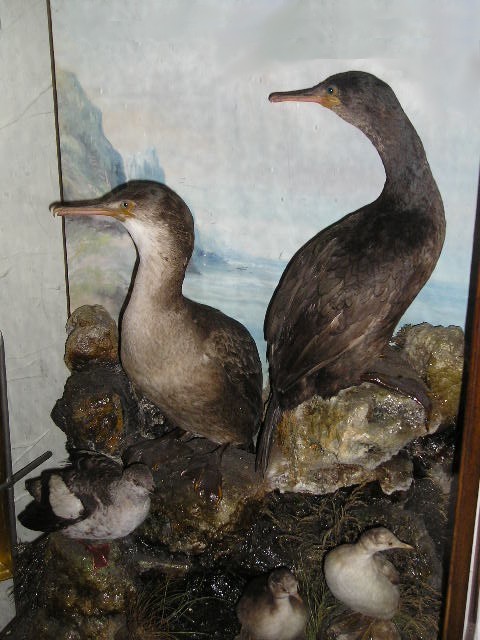
Sea Birds by Peter Spicer of Leamington Spa
Whilst shells and minerals, for example, had no natural enemies, the skins of mammals and birds would almost inevitably be destroyed over time by the depredation of insects. The establishment of stable long-term collections were therefore impossible to guarantee.
There had been many attempts by people to produce a process capable of protecting the longevity of prepared specimens, yet in turn not itself harm the specimens it was meant to protect.
lt was not until about 1771 that a apothecary and naturalist by the name of Jean -Baptise Becour of Metz France, succeeded in developing a mixture of powdered white arsenic, soap, salt of tartar, camphor and powdered lime, that worked as an effective agent against insect destruction. Becour's formula was kept a closely guarded secret, however and it was many years afterwards before it became generally available for use by other practitioners.
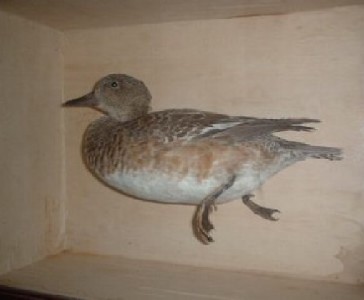
Simply stunning female duck, as if swimming by Cullingford of County Durham. Joesph Cullingford and Robert Duncan, both of County Durham specialised in the production of museum style cases where the importance was placed on the bird / animal, rahter than its habitat. These cases were for scientific purposes mainly and were used in Schools and Universities across the UK.
Whilst it is uncertain as to who may have been the first commercial taxidermist entity in Europe, amongst documents from Charles Wilson Peale dated 1792, there is a letter to a Thomas Hall of Moorfields offering to trade or purchase specimens prepared by Thomas Hall himself. One may conclude that Hall was already a commercial practitioner of sorts, conducting trade through commercial sales and exchanges of articles of taxidermy and that more likely, his practice dated even earlier than the date of this document.
Science and society yearned to learn more about the existence of animals beyond the coast of Europe. As early as 1660, England had formed its first scientific society, The Royal Society, a prestigious scientific society founded for the promotion of natural knowledge. By the latter half of the eighteenth century, the Industrial Revolution had fuelled the widespread interest of all branches of science, which included amongst others, the study of physics, mechanical science and optics. The need for a more specific Society to deal with matters relevant to the fields of zoology and botany instigated the formation of a few specialised societies founded by learned naturalists, but most did not last long and few publications were ever published. In 1788, the Linnean Society named after the Swedish scientist, Carl Linnaeus was founded in London, with the stated purpose of " the cultivation of the science of Natural History."
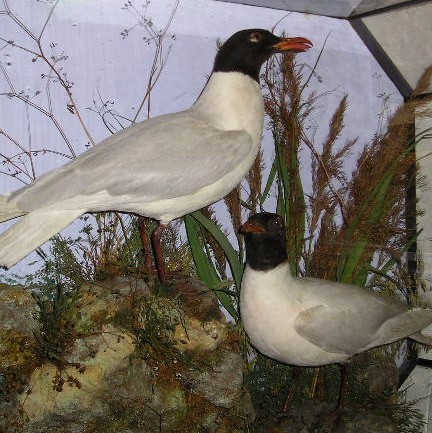
Gulls by Henry Ward
It too was to soon disappoint the hopes of scientists by concentrating more upon the field of botany than on the broader science of natural history, a direction not surprising, after all the society was named after a Swedish Botanist. Frustrated at the pace at which papers describing new species were being published and released by the Society, a number of Fellows started the Zoological Club of the Linnean Society in 1822 .
Birds had always been a popular form of animal to collect and as such, numerous books with hand-colored plates had already been published in Britain, far outstripping those of any other animal group. Early British authors of the eighteenth century of the likes of Eleazar Albin, George Edwards, Peter Brown, John Latham and later in the centaury William Lewin, drafted illustrations for their hand-colored ornithological publications either from references made of living birds, or by the aid and use of preserved bird skins. In France, their counterparts in other important ornithological works included such famous names as Pierre Joseph Buc'hoz, de Buffon and Francois Levaillant.
By the turn of the nineteenth century better methods of preservation and taxidermy were being developed permitting artists to make more accurate representations of birds from specimens of species they had often never seen alive before .The result was that the standard of ornithological illustrations was significantly raised fuelling the demand from wealthy noblemen and businessmen to purchase such grand illustrated works that were to eventually come from the likes of John James Audobon, Edward Lear and the most famous of all bird illustrators, John Gould
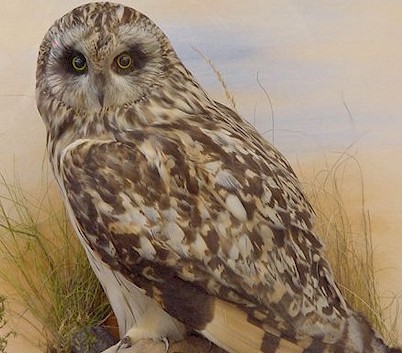
Simply stunning Short Eared Owl by Mike Gadd
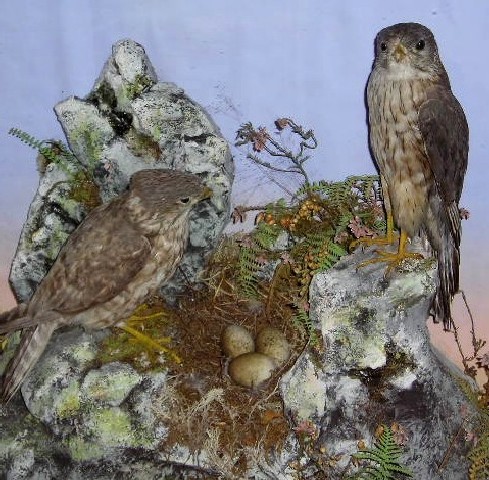
Merlins with eggs by Henry Shaw
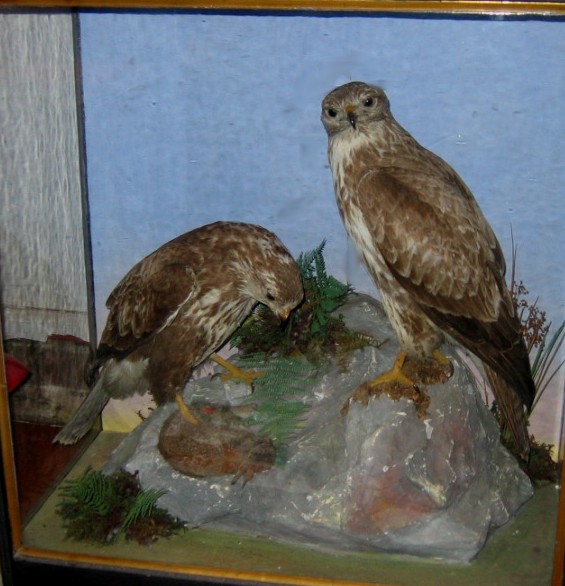
Pair of Common Buzzards by Henry Shaw
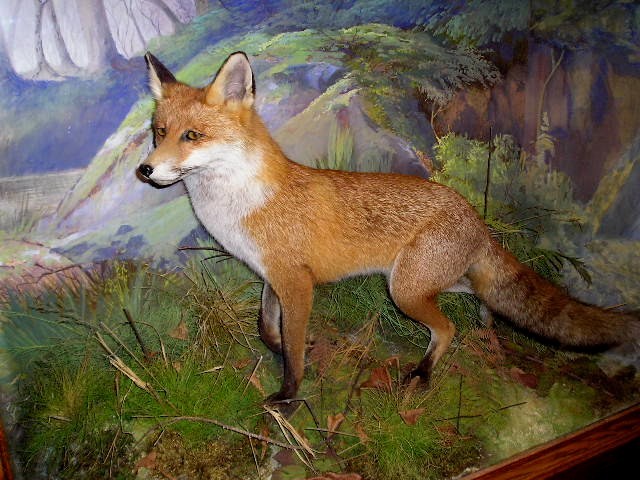
Conniston Fox by Peter Spicer
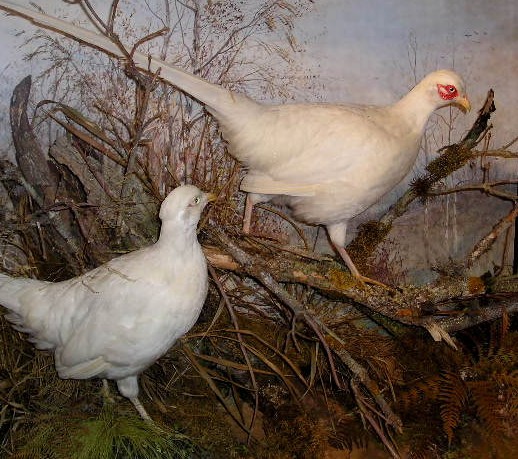
White Ring Necked Pheasants by Peter Spicer. Unusual also to find wodden branches in the case.
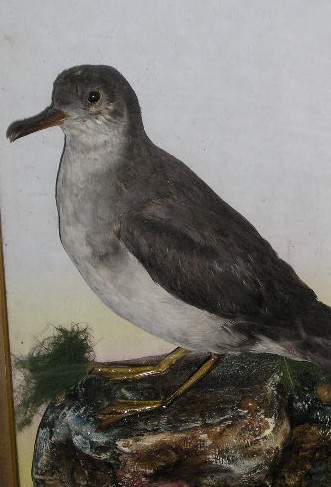
Manx Shearwater by Hutchings of Aberystwyth. Victorian case.
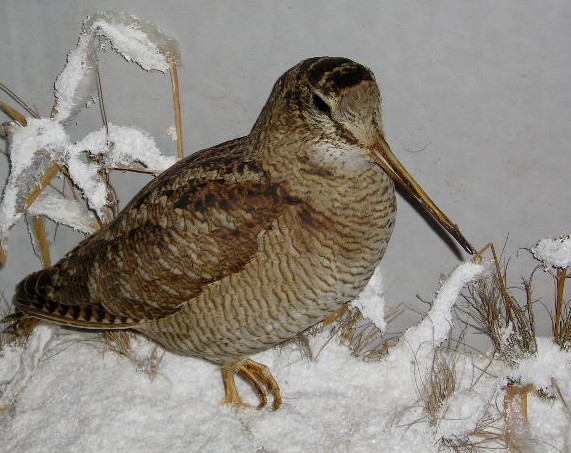
Woodcock in Winter scene by TE Gunn.
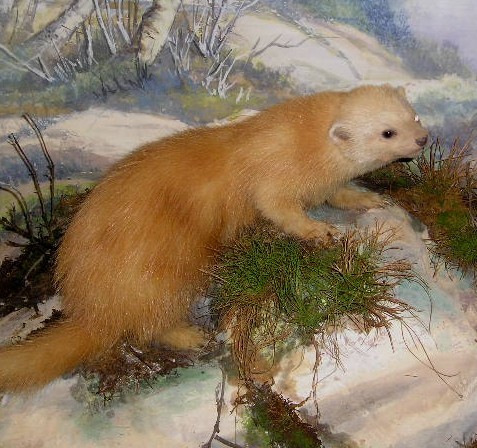
Ferret by Peter Spicer
www.portobelloroad.co.uk
www.victorian-taxidermy.co.uk
www.alexisturner.co.uk
www.taxidermy.co.uk
www.antiques-uk.net
An interesting French site now up, I suggest you take a look
taxidermy.monsite.wanadoo.fr/
Taxidermy4Cash does not undertaken taxidermy, rather we are collectors of
other people’s work, both current and historical we also offer web hosting,
a search engine submission service and increasingly one of the larger
article resource banks on the net. So if your keen to learn about Taxidermy
etc, then you know where to look.
We are always interested to here about new resource, if you feel a resource
should be listed here then please contact us.
|
ITEMS
WANTED. Please respond via this on-line form HERE
with a description of what you have for sale.
[HOMEPAGE]
Taxidermy Links.
Please double click on the Taxidermy link icon below.
Taxidermy
Links
|
|










